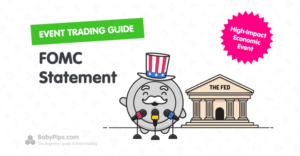Markets roared back Monday after reports suggested Iran may be backing off its fight with Israel, triggering broad rallies for risk assets.
The de-escalation headlines gave traders reason to breathe, especially with G7 leaders meeting in Canada and Middle East tensions cooling after a four-day aerial exchange.
Here are headlines you may have missed in the last trading sessions!
Headlines:
- Over the weekend, Nikkei reported that the BOJ is considering slowing the pace of its cuts in government bond purchases from April 2026
- New Zealand services NZ PSI for May: 44.0 (48.6 forecast; 48.5 previous)
- New Zealand composite NZ PCI for May: 44.3 (48.2 forecast; 48.2 previous)
- China house price index for May: -3.5% y/y (-4.3% y/y forecast; -4.0% y/y previous)
- China retail sales for May: 6.4% y/y (4.7% y/y forecast; 5.1% y/y previous)
- China industrial production for May: 5.8% y/y (5.5% y/y forecast; 6.1% y/y previous)
- China fixed asset investment (YTD) for May: 3.7% y/y (4.3% y/y forecast; 4.0% y/y previous)
- China unemployment rate for May: 5.0% (5.1% forecast; 5.1% previous)
- Swiss producer & import prices for May: -0.7% y/y (-0.6% y/y forecast; -0.5% y/y previous); -0.5% m/m (-0.4% m/m forecast; 0.1% m/m previous)
- Swiss SECO economic projections expect the economy to grow by 1.3% in 2025, a downgrade from the government’s March forecast of 1.4%
- ECB official Nagel said it’s not sensible to signal either pause or rate cut for the time being
- Euro Area labour cost index for Q1 2025: 3.4% y/y (3.2% y/y forecast; 3.7% y/y previous)
- Euro Area wage growth for Q1 2025: 3.4% y/y (3.7% y/y forecast; 4.1% y/y previous)
- Canada housing starts for May: 279.5k (250.0k forecast; 278.6k previous)
- Israel PM Netanyahu declared his country was on the “path to victory” against Iran
- WSJ reported that Iran is signaling its readiness to de-escalate hostilities and restart nuclear talks
- Reuters reports Iran has asked Qatar, Saudi Arabia, and Oman to press U.S. President Trump to use his influence on Israel to agree to an immediate ceasefire
- NY Empire State manufacturing index for June: -16.0 (-6.0 forecast; -9.2 previous)
Broad Market Price Action:
Markets came roaring back Monday as headlines hit that Iran might be looking to dial down its fight with Israel. That shift in tone gave traders something to cheer about, especially with G7 leaders meeting in Canada and tensions showing signs of easing after a four-day aerial exchange.
U.S. stocks logged solid gains, with major indexes rising between 0.75% and 1.5%. European markets weren’t far behind, with futures ticking higher as the improved mood rippled across the board. Tech and communication names led the rebound while utilities slipped as investors backed off safe plays.
WTI crude pulled back from $75.00 to $70.00, giving up Friday’s war-fueled jump. Shipping traffic through the Strait of Hormuz remained steady, which helped ease concerns about potential supply disruptions in the region.
Gold dropped more than 1% as safe-haven demand faded. The metal had popped to an eight-week high during the height of the conflict, but likely saw profit-taking ahead of the Fed meeting. Bitcoin also got a boost to $109,000 before easing to $107,000 as traders leaned into risk again and looked ahead to possible progress on trade talks at the G7. Meanwhile, U.S. 10-year yields rose to 4.45% as Middle East tensions eased and investors awaited the Fed meeting.
All eyes now turn to Wednesday’s Fed decision, where policymakers are widely expected to keep rates unchanged given the ongoing geopolitical and trade uncertainties swirling around markets.
FX Market Behavior: U.S. Dollar vs. Majors:
The dollar was mostly stuck in ranges at the start of the week as traders weighed cautious risk-taking against ongoing jitters from the Israel-Iran standoff. China’s May retail sales surprised to the upside, offering a bit of relief for regional sentiment, but it wasn’t enough to get the Greenback moving in either direction.
Things changed fast in Europe. Word got out that Iran wanted to call it quits on the conflict with Israel, and that lit a fire under risk appetite. EUR/USD jumped, commodity currencies took off, and the dollar got whacked across the board as traders rushed into higher-yielding plays.
By the time New York came online, U.S. data added to the noise. The Empire State manufacturing index came in even worse than expected, pointing to deeper trouble for the industrial sector. That gave the dollar a brief lift, but the bounce didn’t last long.
The risk-on move held through most of the day, helped by expectations that the Fed will keep rates steady at Wednesday’s meeting. With profit-taking and de-escalation hopes weighing on the dollar, it finally found a bit of support late in the day as traders stepped back and braced for what the Fed might say next.
Upcoming Potential Catalysts on the Economic Calendar
- Germany ZEW economic sentiment index for June at 9:00 am GMT
- Euro Area ZEW economic sentiment index for June at 9:00 am GMT
- New Zealand Global Dairy Trade price index for June 17
- U.S. retail sales for May at 12:30 pm GMT
- U.S. import & export prices for May at 12:30 pm GMT
- U.S. manufacturing production for May at 1:15 pm GMT
- U.S. capacity utilization rate for May at 1:15 pm GMT
- U.S. industrial production for May at 1:15 pm GMT
- U.S. business inventories for April at 2:00 pm GMT
- U.S. NAHB housing market index for June at 2:00 pm GMT
- Canada BOC summary of deliberations at 5:30 pm GMT
- U.S. API crude oil stock change for June 13 at 8:30 pm GMT
- New Zealand Westpac consumer confidence for June 30 at 9:00 pm GMT
- New Zealand current account for March 31 at 10:45 pm GMT
- Japan Reuters Tankan index for June at 11:00 pm GMT
- Japan machinery orders for April at 11:50 pm GMT
- Japan balance of trade for May at 11:50 pm GMT
The European calendar features the ZEW economic sentiment surveys for Germany and the region, which could move the euro if expectations shift on growth or inflation.
Over in the U.S., May retail sales and industrial production figures are due, and they’ll help shape views on the economy’s momentum ahead of next month’s FOMC decision.
As always, stay nimble and don’t forget to check out our Forex Correlation Calculator when taking any trades!









